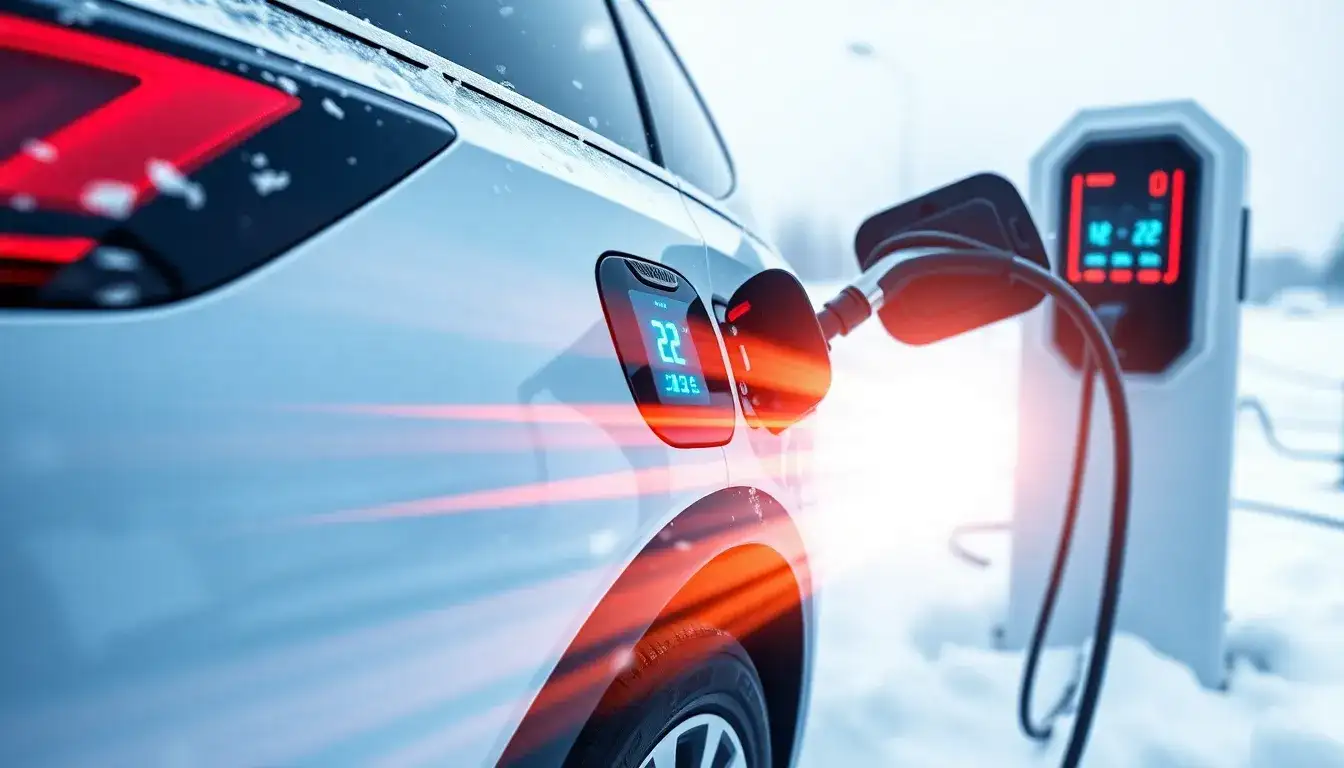
Researchers have developed a special coating that allows for extremely fast charging speeds, ensuring that even in cold weather, the charging range remains unaffected. This breakthrough in electric vehicle battery technology enables charging in just 10 minutes in temperatures below zero degrees Celsius, bringing new hope to the electric vehicle industry.
The success of this innovation is attributed to a meticulously developed special coating technique. This coating not only significantly enhances the charging speed of the battery but also guarantees that its charging range remains stable, even during harsh winter conditions. Cold weather has long been considered the “nemesis” of electric vehicle batteries. For instance, if an electric vehicle takes 20 minutes to charge using a DC charger in the sweltering summer heat, the charging time can often increase by several minutes when temperatures plummet. This not only wastes valuable time but may also deter potential buyers, particularly those living in areas frequently affected by Arctic blasts and occasional polar vortexes.
However, researchers have not stopped their efforts. They have been tirelessly working to overcome this challenge. Recently, a study published in the prestigious scientific journal Joule provided new insights into solving this problem. The research indicates that a special type of electrode can help electric vehicle batteries effectively resist extreme temperatures, maintaining stable range and charging performance. This revolutionary battery material was co-developed by leading scientists from the University of Michigan and experts from Arbor Battery Innovations. They proudly claim that this new type of battery can be fully charged in just 10 minutes, even in frigid conditions of -10 degrees Celsius (14 degrees Fahrenheit).
Even more astonishing is that after 100 charge-discharge cycles, the battery shows minimal degradation. When temperatures drop to uncomfortable lows, the movement of electrons within electric vehicle batteries slows considerably, leading to a significant reduction in driving range and charging speed. To address this challenge, modern electric vehicles have implemented battery preconditioning and heat pump technologies to mitigate these effects, but these solutions do not fundamentally resolve the issue; they merely minimize the impact of extreme weather.
Battery manufacturers are also trying to enhance performance, often by making anodes thicker to improve high-temperature resilience. However, researchers at the University of Michigan pointed out that lithium ions may not move freely within a thicker anode, potentially slowing down charging speed and degrading performance. To tackle this problem, they ingeniously employed laser technology to treat the graphite used in the anode, facilitating faster ion deposition. Yet, this innovation brings new challenges: ultra-fast charging can lead to lithium plating, where lithium accumulates on the anode’s surface instead of being properly absorbed, which can degrade battery performance, slow charging speed, and pose serious safety risks such as short circuits.
To overcome this issue, researchers at the University of Michigan applied a 20-nanometer thick glassy material made from lithium borate carbonate onto the battery. This clever design enables the battery to charge at a rate of 6C, meaning that it can be fully charged in just 10 minutes even in sub-zero temperatures. For comparison, charging at a rate of 1C would require a full hour to charge the battery.
One of the study’s authors, Professor Neil Dasgupta, an authority in mechanical engineering and materials science, stated that this cutting-edge technology can be easily adopted without significant modifications to existing factories, showcasing its high practical value and broad market potential. However, it remains unclear what the specific size and percentage range of the batteries used in the experiment are. It is also uncertain whether the 10-minute charging time refers to charging the battery from 0% to 100% or just to the recommended range of 20%-80% indicated by manufacturers to maintain the battery’s long-term health and lifespan.
This does not imply that existing electric vehicles perform poorly in cold weather. In fact, most modern electric vehicles have a fairly wide operating temperature range. For example, the highly regarded Tesla Model 3 operates effectively within a range much broader than what the researchers claim in this study. According to the user manual, the Model 3’s battery can function between -22 degrees Fahrenheit and 140 degrees Fahrenheit. However, while the battery may operate at these extreme temperatures, efficiency is often compromised. Many Tesla owners have reported a drastic decrease in range when temperatures drop below zero.
This research suggests that electric vehicle batteries utilizing such advanced chemical technology can not only maintain optimal performance under extreme temperatures but also achieve rapid charging without any loss of performance or degradation. As an experimental achievement, this is undoubtedly exciting. If this technology can be widely implemented in the real world, the future of electric vehicles looks even brighter.







